
Deadwood has earned its place as one of the greatest Western television series ever produced, largely due to its commitment to historical authenticity in portraying the events that shaped the actual frontier town of Deadwood. The narrative revolves around real-life figures such as Sheriff Seth Bullock (played by Timothy Olyphant) and saloon proprietor Al Swearengen (portrayed by Ian McShane). The series also features renowned Wild West personalities including Wild Bill Hickok and Calamity Jane, weaving a captivating story that encapsulates both the challenges and prospects of the mining town.
Despite its cancellation after just three seasons, Deadwood stands out as a meticulously researched series, providing insight into the difficult realities of life in the American West. Writers and actors dedicated themselves to ensuring historical reliability, while also taking creative liberties to enrich character development. For viewers, it offers an immersive experience akin to observing life in Al’s saloon firsthand—perfectly encapsulating the essence of the Western genre.
15 The Crédit Mobilier Scandal’s Impact on Investment
Consequences of a Financial Scandal
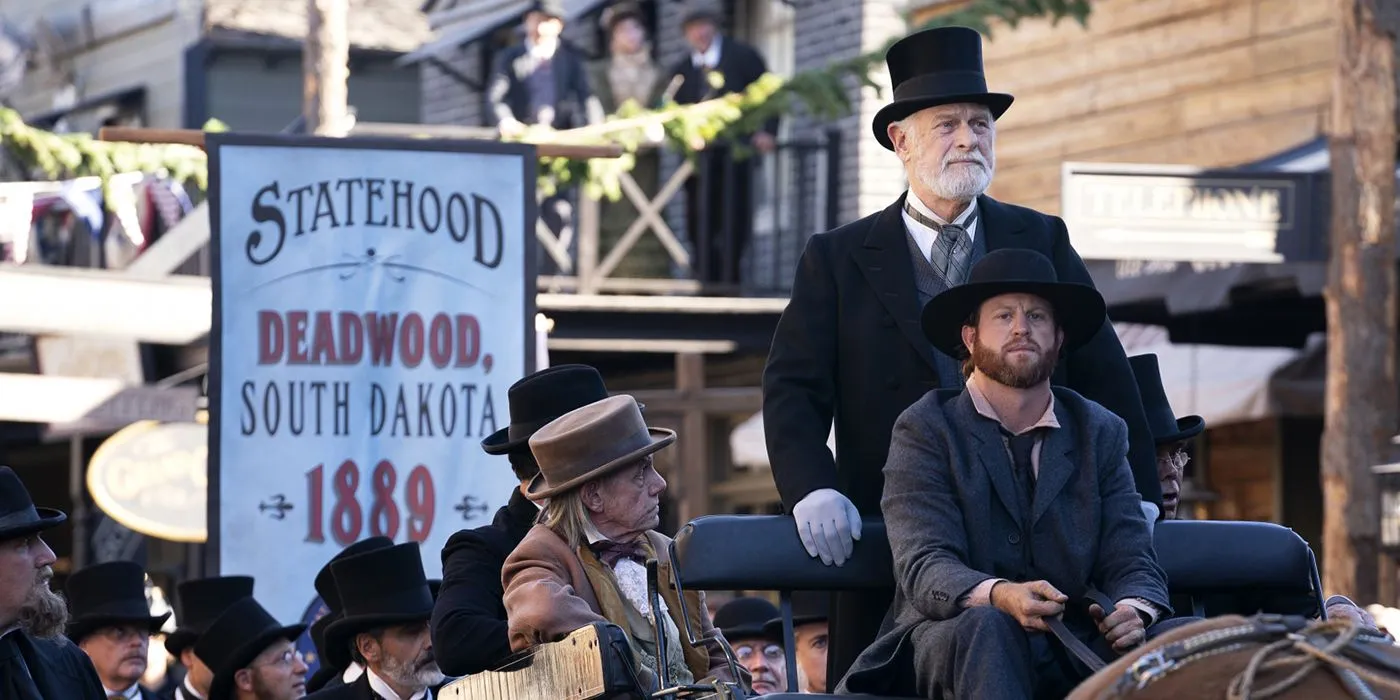


While the series takes artistic liberties with historical events, it provides commentary on real history through nuanced storytelling. Several characters allude to challenges in securing investments for new projects due to a major financial scandal originating from the East—specifically, the Crédit Mobilier scandal. This scandal involved Union Pacific executives who defrauded investors during the railroad’s construction in the 1860s, raising almost double the expected budget but pocketing the excess.
Such historical tidbits, though not central to the plot, offer depth to the backdrop of the show, showing how real events influence the fictional narrative.
14 A Shooting at the Gem Saloon
Origin of Trixie’s Character

Trixie (Portrayed by Paula Malcomson) emerges as a memorable character within Deadwood, showcasing resilience as a sex worker at the Gem Saloon. Although initially intimidated by Al Swearengen, she quickly proves her strength and independence, most notably in her opening scene where she shoots a customer who assaulted her.
This key event in the series is likely inspired by historical accounts from Deadwood, particularly that of a woman named Tricksie, who reportedly shot a customer in self-defense, as noted by Legends of America.
13 Bullock’s Public Hanging
A Representation of Justice

The opening scene of Deadwood serves as a gripping introduction to the harsh realities of the frontier while effectively establishing Seth Bullock’s character and commitment to justice. As Bullock and Sol Starr prepare for their new lives, they oversee a prisoner facing execution, but when a mob arrives intent on lynching him, Bullock intervenes.
According to the book, Seth Bullock: Black Hills Lawman, this reflects a true event where Bullock famously held a mob at bay at gunpoint and carried out the hanging himself—a pivotal moment in his story that echoes through the series and its film adaptation.
12 The Black Hills Gold Rush: 1876-1877
The Gold Discovery and Town Growth


The storyline of Deadwood intricately ties to the Black Hills Gold Rush, illustrating this pivotal era in U.S. history. The Black Hills Expedition led by Colonel Custer in 1874 resulted in gold discoveries that attracted countless fortune-seekers from near and far, eagerly claiming their stakes.
The town of Deadwood itself is historically rooted in this gold rush, evolving from a collection of shacks into a bustling town, particularly after Al Swearengen established the Gem Theater in 1876 and a thriving merchant class developed to cater to the influx of miners.
11 Wild Bill Hickok’s Demise
The Tragic Death of Wild Bill Hickok
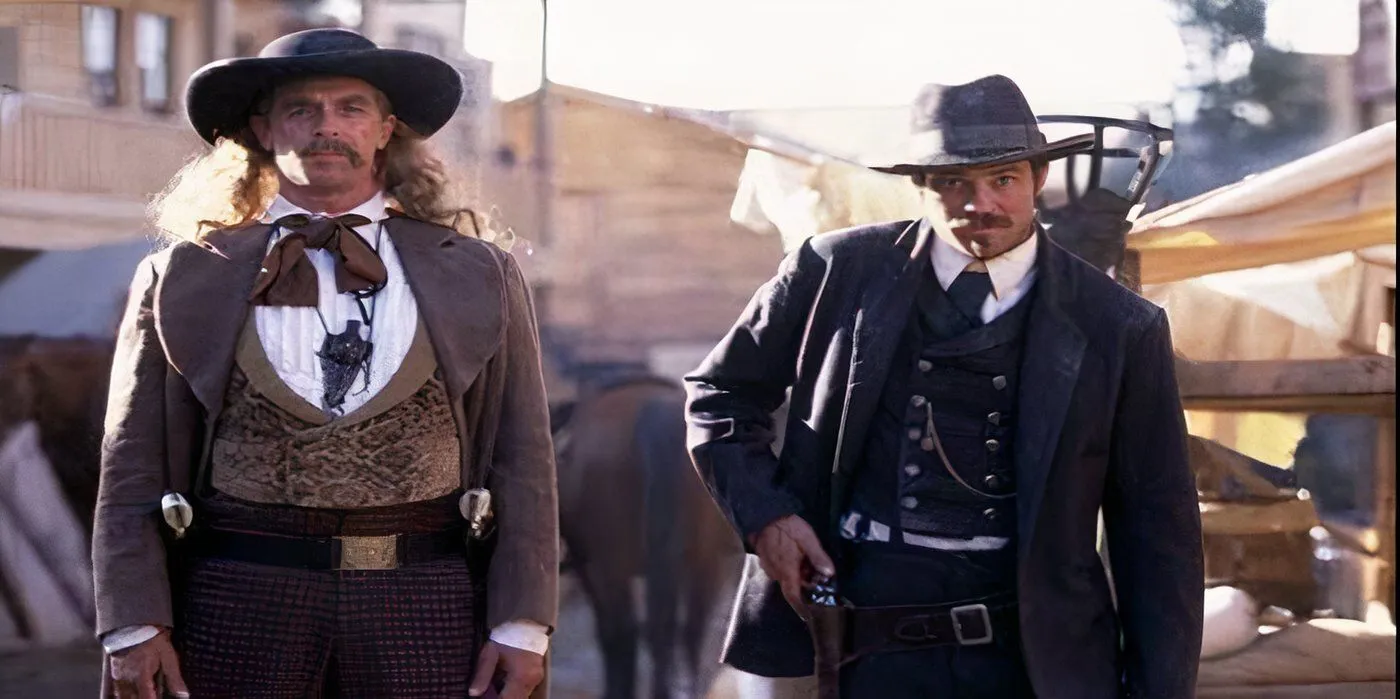

Keith Carradine’s portrayal of Wild Bill Hickok is one of the show’s most faithful representations of historical figures. In 1876, Hickok arrived in Deadwood alongside Calamity Jane, and his infamous gunfighter status cast a long shadow over the town—a reality that ultimately led to his untimely death at the hands of Jack McCall.
As depicted faithfully in the show, McCall shot Hickok in the back of the head while Hickok was playing poker, a moment chronicled in various historical accounts.
10 McCall’s Trial and Acquittal
The Controversial Defense of McCall
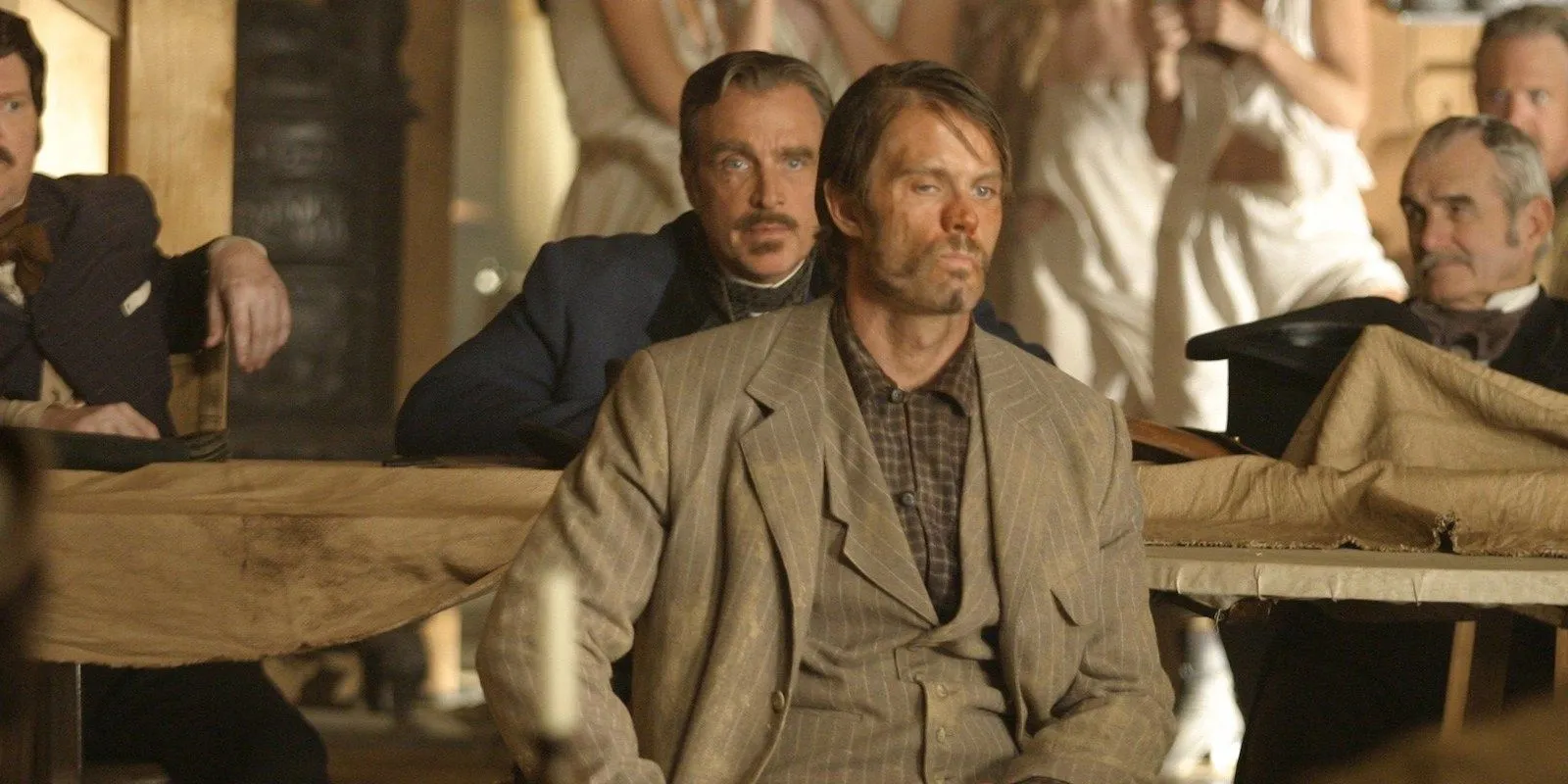
As shown in Deadwood, Jack McCall was soon arrested following Hickok’s murder, leading to a hastily organized trial. In the series, the trial takes place in the Gem Saloon; historically, it unfolded at McDaniel’s Theater. Despite overwhelming witness testimony, McCall claimed his act was revenge for Hickok allegedly killing his brother years prior.
Remarkably, McCall was acquitted but fled Deadwood. The dramatized hunt for him in the series diverges from reality; he was simply arrested again in Wyoming after boasting about the crime. Ultimately, he was tried once more, found guilty, and executed.
9 The Chinese Community in Deadwood
Cultural Integration and Contributions

A significant aspect of the town depicted in Deadwood is its vibrant Chinese community. Represented primarily by Mister Wu (played by Keone Young), this community is shown as an integral part of Deadwood, engaging in various enterprises, including collaborations with Al Swearengen.
Historically, Deadwood welcomed a considerable number of Asian immigrants during an era marred by anti-Chinese sentiment elsewhere in the U.S. The Chinese immigrants established their own cultural enclave while actively participating in the broader Deadwood community.
8 A Smallpox Outbreak in 1876
Calamity Jane’s Heroic Efforts

Beyond outlaws and violence, residents of Deadwood faced the peril of disease, which posed perhaps the greatest threat. The show accurately portrays the devastation of a smallpox outbreak in 1876, which historically resulted in significant loss of life. During this crisis, Calamity Jane took on the noble task of caring for the afflicted, risking her own health to assist others.
The outbreak claimed around 300 lives, approximately one-third of the town’s population, leading to profound economic repercussions as businesses shuttered in response. Yet, at this challenging juncture, Deadwood demonstrated remarkable resilience, highlighting the indomitable spirit of its community.
7 The Tragic Metz Family Incident
A Horrific Historical Event

The Metz family massacre stands out as one of the most harrowing events depicted in Deadwood and is, chillingly, rooted in real history. The Metz family, travel-in Dutch settlers passing through Deadwood, fell victim to a brutal attack in 1876, an event that was historically misattributed to Native American raiders, specifically Crazy Horse.
In Deadwood, the attack is visually dramatized, showcasing the brutal nature of Al Swearengen’s underlings while crafting a narrative thread that highlights the vulnerability of innocents in a chaotic world. The fictional representation of young Sofia (Bree Seanna Wall) as a survivor is a poignant touch not found in historical accounts, as the real Metz family suffered no survivors in the attack.
6 South Dakota’s Statehood in 1889
Transformation of Deadwood with Statehood

Many years transpired between the series finale and the events of Deadwood: The Movie, allowing for character evolution and historical developments. Notably, the film’s narrative addresses the consequential event of South Dakota’s statehood in 1889, showcasing the growth and transformation of Deadwood during this period.
The film accurately depicts the celebrations that followed the territory’s official statehood, with Deadwood evolving from mere shanties into a bustling town that boasted infrastructure improvements such as a railway system, enhancing its economic prospects significantly.
5 Wyatt and Morgan Earp’s Journey to Deadwood
The Earp Brothers in Search of Wealth

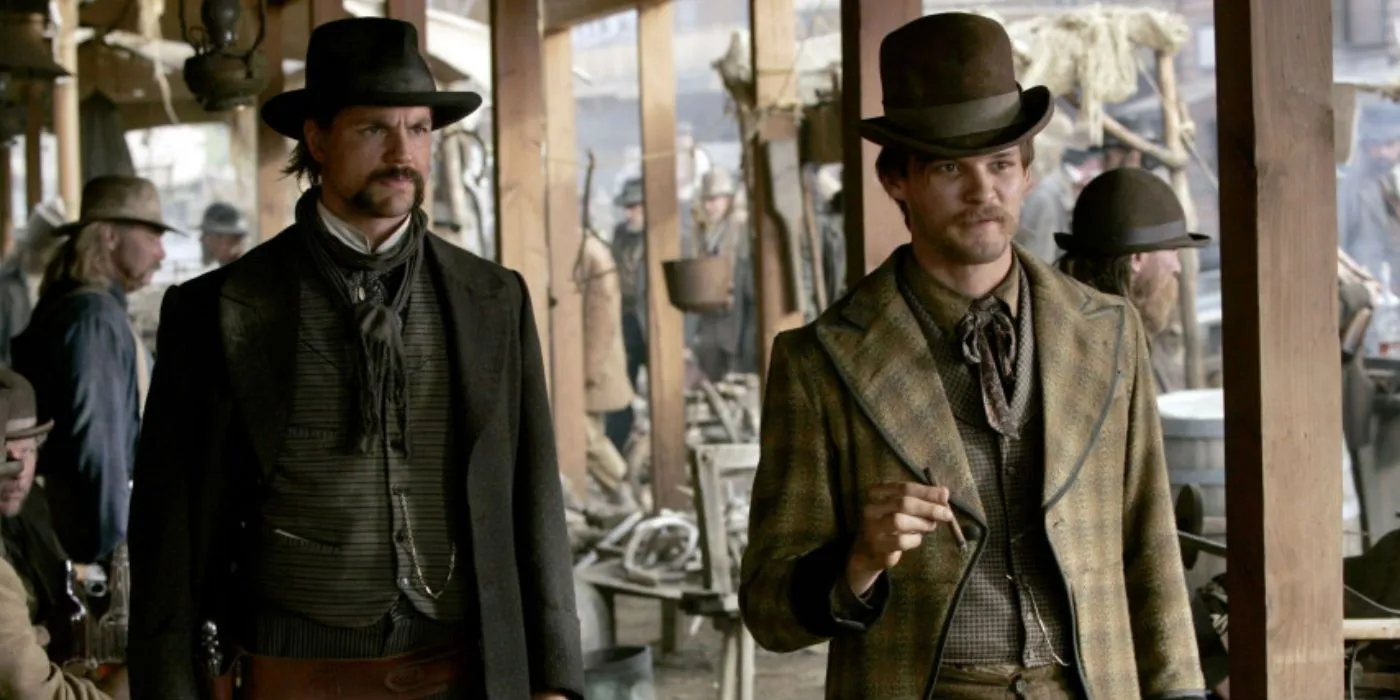
Few names resonate in Wild West history as prominently as that of Wyatt and Morgan Earp. True to its historical roots, Deadwood includes the Earp brothers, who ventured into Deadwood in 1876 during the height of the Black Hills Gold Rush.
According to the book, Wyatt Earp – Frontier Marshal by Stuart Lake, the brothers left Dodge City, Kansas, enticed by the promise of wealth. Although faced with crowded mining conditions, their experience would lead them to try their luck at gambling and also briefly engage in transporting lumber.
4 Jack Langrishe and His Theatrical Influence
Cultural Contributions by Langrishe


Brian Cox’s character, Jack Langrishe, makes his entrance in the final season of Deadwood, bringing a flourish of culture to the town as he establishes a theater house alongside a troupe of performers. Langrishe’s historical impact is well documented, as reflected in the series.
As confirmed by Legends of America, Langrishe initially operated within the Bella Union Theater before continuing to foster the arts in Deadwood. His endeavors enriched the town, introducing residents to cultural activities that otherwise might have been unattainable.
3 Seth Bullock’s Enduring Legacy
The Lasting Presence of the Bullock Hotel

The Bullock Hotel is another authentic location featured in Deadwood that exists in reality. As the film unfolds, former sheriff Seth Bullock is depicted as a U.S. Marshal actively contributing to law and order in the now-thriving mining town. He and his associate Sol Star have successfully established the Bullock Hotel.
Lauded as a major tourist attraction, the Historic Bullock Hotel remains a lasting tribute to the town’s rich history over 125 years later.
2 George Hearst’s Mining Ventures
The Expansive Influences of George Hearst

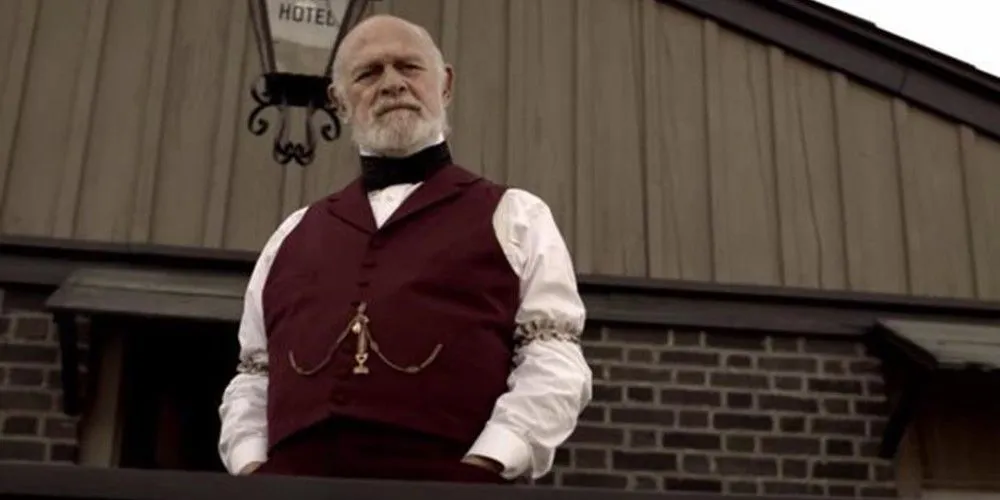
George Hearst, portrayed by Gerald McRaney, remains a pivotal though less recognized historical figure in Deadwood. Arriving in the town in search of gold, Hearst purchased the renowned Homestake Mine and, over time, expanded his holdings to over 600 acres.
Although the series dramatizes Hearst’s actions—including a spectacle that shows him facing repercussions for his unscrupulous business practices—historically, he evaded accountability for his aggressive acquisition tactics. Hearst eventually transitioned from mining to becoming a prominent newspaper magnate and even served as a Senator from 1887 to 1891.
1 Sol Star’s Political Journey
Achievements in Local Governance

The historical accuracy embedded in Deadwood is a major factor in its ability to engage viewers. Sol Star (John Hawkes) emerges as a key player alongside Bullock and Swearengen, founder of the town’s hardware store, and eventually rose to become Mayor of Deadwood in 1884, later serving in the South Dakota House of Representatives.
While the series highlights some of his achievements, it does not capture the full extent of his impactful political career, showcasing how real historical figures enriched the narrative of Deadwood.
Source: Spearfish Area Historical Society, Deadwood, Legends of America, The Historic Bullock Hotel
Leave a Reply